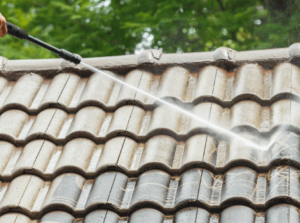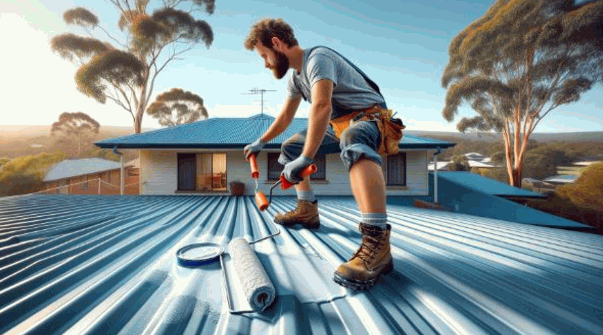Considering a fresh aesthetic for your roof? Painting roof tiles can significantly enhance your home’s curb appeal, extend the lifespan of your roof, and provide long-term cost savings. This article examines the advantages of painting roof tiles, provides a detailed guide to the essential steps involved in the process, and emphasizes critical safety precautions. Additionally, it discusses the types of roof tiles that are suitable for painting and presents alternative options for those contemplating a different approach. Prepare to elevate both the appearance and functionality of your roof.
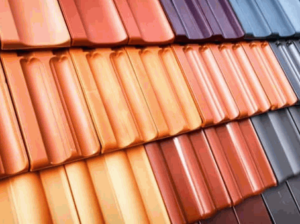
Can You Paint Roof Tiles?
Painting roof tiles presents a viable opportunity to enhance both the aesthetic appeal and longevity of a residential property. Whether the roof tiles are made of concrete or terracotta, applying a coat of paint can offer weather resistance and improve energy efficiency.
However, it is crucial to consider the type of roofing materials and ensure proper maintenance before engaging in professional painting services. This method can result in a significant transformation in the appearance of the home while also providing protection against moss, lichen growth, and other environmental factors that may compromise the durability of the roof.
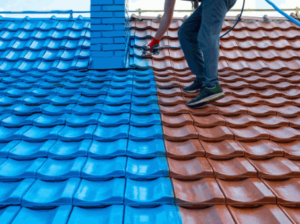
What Are The Benefits Of Painting Roof Tiles?
Painting roof tiles provides numerous advantages, such as enhanced aesthetics, increased longevity, and potential cost savings in the long run.
By utilizing high-quality paint products, homeowners can significantly improve the visual appeal of their roofs, thereby making it a prominent feature of their property. Furthermore, a properly painted roof can reflect sunlight, thereby enhancing energy efficiency and lowering cooling expenses during warmer months.
Improves Aesthetics
One of the primary advantages of painting roof tiles is the substantial enhancement in the overall aesthetics of a residence. Choosing the appropriate color for roofs not only boosts curb appeal but also enables homeowners to express their personal style through home improvement initiatives.
When selecting a color for a roof, it is important to understand that different shades can elicit various emotional responses. For example, a soft blue may evoke a sense of tranquility, whereas a bold red can convey warmth and vibrancy. These color choices not only affect the homeowner’s enjoyment of their living space but also have implications for potential buyers.
- Neutral colors, such as grays and browns, typically appeal to a broader audience, facilitating the sale of homes.
- Conversely, bright or unconventional colors can distinguish a property in a competitive market.
The durability of the painted roof is crucial for preserving these aesthetic qualities; high-quality paint specifically formulated for roofing can endure harsh weather conditions, ensuring that the colors remain vibrant for years. Investing in a quality finish can ultimately enhance the overall appeal of the home while providing excellent value for the investment.
Increases Longevity
Painting roof tiles can significantly enhance their longevity by providing an additional layer of protection against environmental factors. Adhering to proper roof preparation steps, which include the application of a primer coat and addressing any paint adhesion issues, is essential to ensure the durability and lifespan of the painted roof.
Over time, roofs may be susceptible to the growth of moss and lichen, which can trap moisture and contribute to further deterioration. By applying a carefully selected roof coating, homeowners not only improve the aesthetic appeal but also offer protection against these detrimental organisms. The appropriate paint can serve as a barrier, preventing the establishment of moss and lichen while allowing the roof materials to breathe.
The roofing restoration process should commence with a comprehensive inspection to identify any existing damage. Following this assessment, a pressure wash can effectively eliminate old debris, and any cracked tiles should be repaired. Once the surface is clean and dry, the application of a primer coat is often advisable to maximize paint adhesion; this step is critical in preventing common issues such as lifting or bubbling.
- Regular inspections after painting can help identify early signs of damage.
- Cleaning the roof at least twice a year will assist in removing leaves and debris that may promote moisture retention.
- Consider reapplying a protective sealant every few years to maintain the roof’s integrity and vibrancy.
Saves Money
Investing in the painting of roof tiles can result in significant cost savings over time, particularly when considering the reduced necessity for frequent roof maintenance and repairs. By enhancing energy efficiency through the application of reflective coatings, homeowners have the potential to lower their utility bills while simultaneously increasing the overall value of their property.
A well-painted roof can effectively extend its lifespan, thereby diminishing the frequency of costly replacements. According to a study conducted by the Cool Roof Rating Council, reflective roof coatings can reduce cooling costs by up to 20%. This reduction translates into substantial annual savings, making the initial investment not only justifiable but also advantageous in the long term.
Homeowners have reported an average decrease of 30% in energy bills following a roof painting project. Furthermore, case studies indicate that properties featuring reflective coatings have sold for approximately 10% more than comparable homes without such enhancements.
Consequently, it is evident that the decision to invest in roof painting not only promotes a more sustainable living environment but also yields impressive financial returns.
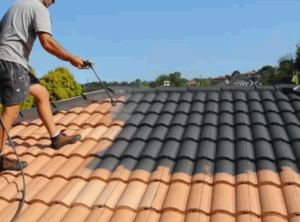
What Are The Steps To Painting Roof Tiles?
The roof painting process comprises several essential steps that are crucial for achieving a successful and durable finish. These steps range from cleaning and preparing the roof to selecting appropriate paint and applying it correctly. Each stage is integral to attaining optimal results.
Engaging professional roof painters can significantly streamline this process, ensuring adherence to proper roof maintenance standards.
Cleaning And Preparing The Roof
Before commencing any painting project, it is crucial to thoroughly clean and prepare the roof utilizing effective roof cleaning methods. This process includes implementing moss removal techniques and ensuring that the surface is devoid of dirt, mold, and other debris to facilitate optimal paint adhesion.
A clean roof not only enhances the visual appeal of the property but also contributes to the longevity of the paint application. Several methods can be employed for this purpose:
- Pressure washing: This technique employs high-pressure water to eliminate stubborn stains and grime, resulting in a pristine surface.
- Chemical treatments: Specialized cleaning solutions can effectively target specific issues such as mold or mildew, providing a deep clean that physical methods may not achieve.
It is important to understand that while do-it-yourself methods may be enticing, engaging professional painting services ensures that the job is executed safely and effectively. Their expertise is invaluable in selecting the appropriate cleaning method for various roof materials, thereby safeguarding your investment in your home.
Explore further: Is Roof Cleaning A Good Idea
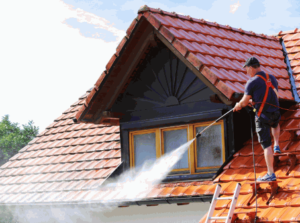
Choosing The Right Paint
Selecting the appropriate paint is a crucial step in the roof painting process, as it significantly impacts both the durability and aesthetic appeal of the final surface. Acrylic latex paint is frequently regarded as the preferred option due to its weather resistance and longevity in comparison to other types of roofing paints.
Among the various alternatives, oil-based paints are notable for their exceptional adhesion and flexibility, making them particularly suitable for metal roofs. Additionally, reflective coatings improve energy efficiency by minimizing heat absorption, which is advantageous in warmer climates.
Each type of paint presents distinct benefits, including:
- Acrylic Paints: Highly effective for a range of materials and conditions, characterized by rapid drying times and resistance to ultraviolet light.
- Elastomeric Coatings: Ideal for flat roofs, these coatings create a robust waterproof barrier that accommodates temperature fluctuations through expansion and contraction.
- Metal Roof Paints: Specifically formulated to provide rust protection and enhanced durability against environmental elements.
When selecting the appropriate paint, it is important to consider factors such as roof material and the surrounding climate. For instance, a cooler environment may benefit from lighter colors to reflect sunlight, while areas with high humidity necessitate the inclusion of mildew-resistant properties.
Proper application techniques, such as spraying or rolling, can further enhance the longevity of the paint, ensuring a durable finish that stands the test of time.
Applying The Paint
The application of paint represents the final and most critical step in the roof restoration process, specifically when dealing with roof tile restoration and enhancing roof aesthetics.
Employing effective roof painting techniques and ensuring an even application of paint can significantly enhance the roof’s protection against environmental elements. To achieve optimal results, it is imperative to begin by thoroughly cleaning the roof surface to eliminate any debris or loose materials that may hinder adhesion, a step critical in the overall roof restoration process.
Subsequently, utilizing appropriate tools—such as high-quality brushes or rollers—is essential to promote an even distribution of paint. It is recommended to apply multiple thin layers rather than a single thick coat, as this approach facilitates improved drying and durability, particularly important in the primer coat application stage.
Adhering to the manufacturer’s instructions regarding drying times and application conditions is crucial for ensuring that the paint, including durable paint products such as Dulux AcraTex, performs optimally over time. For individuals who find this task daunting, engaging the services of professional roof painters may provide peace of mind, as their expertise and knowledge can guarantee the best outcomes.
- Always ensure the roof is thoroughly cleaned prior to painting.
- Utilize high-quality tools for application.
- Carefully follow the manufacturer’s guidelines.
- Consider seeking professional assistance for optimal results.
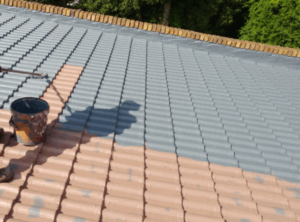
What Are The Safety Precautions To Take When Painting Roof Tiles?
When undertaking the task of painting roof tiles, including terracotta roof tiles and concrete roof tiles, it is essential to prioritize safety precautions in order to prevent accidents and injuries. This includes the use of protective gear, such as gloves and masks, and ensuring that work is performed on a dry and calm day to mitigate the risk of slips and falls while on the roof.
Use Protective Gear
The use of protective gear is critical when painting roof tiles, as it provides protection against potential hazards associated with paint chemicals and the risk of falls. Appropriate gear includes gloves, masks, and non-slip footwear, all of which contribute to safety and comfort during the work process.
In the context of safety considerations, roofing contractors underscore the importance of selecting the right protective apparel to effectively mitigate risks. High-quality gloves not only protect the hands from harmful chemicals present in certain paints but also enhance grip, thereby reducing the likelihood of accidents. Similarly, the use of a mask is essential to filter out toxic fumes, allowing workers to perform their tasks without inhaling dangerous particles that could pose health risks.
- Non-slip footwear is equally important, as it offers stability on steep surfaces, significantly decreasing the risk of slips and falls during the painting operation.
- Furthermore, investing in protective eyewear can prevent splashes from causing serious eye injuries, particularly when using spray paint, which is commonly employed in roofing projects.
This commitment to safety is a defining characteristic of professional painting services, where contractors implement necessary precautions to safeguard both their workers and the property of their clients.
Work On A Dry And Calm Day
Selecting a dry and calm day for roofing work is essential for both the safety and the effectiveness of the paint application. Wet or windy conditions can elevate the risk of slips and compromise paint adhesion, ultimately leading to suboptimal outcomes in roof maintenance and painted roof lifespan.
The significance of weather conditions in roof painting cannot be overstated; factors such as temperature and humidity play vital roles in ensuring a successful application. Low temperatures can impede the proper drying of paint, while excessive heat can cause it to dry too rapidly, resulting in an uneven finish. Additionally, moisture in the air can adversely affect the paint’s ability to adhere correctly.
Consequently, professional painters, including those from expert groups like the Oz Roof team, should consider the following recommendations:
- Review local weather forecasts several days in advance to anticipate any changes.
- Monitor humidity levels, which should ideally range between 40% and 70% for optimal application.
- Schedule workdays for early morning or late afternoon when temperatures are more moderate.
- Identify a window of at least 24 hours of dry weather following painting to ensure that the new coating cures properly.
By adhering to these guidelines, one can significantly improve the likelihood of achieving a high-quality finish while ensuring a safe working environment. It is important to recognize that optimal weather conditions contribute to superior painting results.
Use Ladder Safety Measures
Implementing ladder safety measures is essential when working on roof tiles to prevent falls and injuries. Proper placement and use of ladders, along with securing them against the roof, are critical in mitigating the risks associated with climbing and painting.
Plus securing the ladder, and selecting the appropriate type of ladder that meets the specific height and weight requirements for roofing tasks is imperative. Utilizing ladders rated for outdoor use can significantly enhance both durability and safety.
To ensure safe climbing practices, individuals should maintain three points of contact at all times, whether by having two hands and a foot or two feet and a hand on the ladder. The presence of spotters can be invaluable; they can assist in stabilizing the ladder while providing support and reinforcing safety compliance.
Key safety practices include:
- Always inspecting the ladder for any damage before use.
- Ensuring the ladder is positioned on stable ground.
- Securing any tools or materials to avoid carrying them while climbing.
For individuals who are concerned about safety or lack experience, hiring professional roof painters who are well-versed in best practices is advisable. This approach not only ensures high-quality results but also significantly reduces the risk of injury.
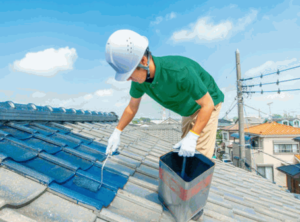
Can You Paint Different Types Of Roof Tiles?
It is indeed possible to paint various types of roof tiles, including concrete, clay, and metal roof tiles. Each material necessitates specific painting techniques for roofs to achieve optimal results, ensuring proper paint adhesion and adequate protection of the surface while considering roof aesthetic choices and color choices for roofs.
Concrete Roof Tiles
Concrete roof tiles represent a highly suitable option for painting due to their durability and the potential benefits of a fresh coat, which can enhance both their aesthetic appeal and longevity. It is essential to utilize high-quality, durable paint products, including those from well-regarded brands like Dulux, specifically formulated for concrete surfaces to achieve lasting results and improve roof appearance enhancement.
Before painting, meticulous surface preparation is imperative. This process involves thoroughly cleaning the tiles to eliminate any dirt, debris, or moss that could impede adhesion, emphasizing the importance of cleaning. Using a power washer can effectively prepare the surface, after which it is important to allow the tiles to dry completely.
Once the tiles are dry, applying a primer designed for concrete roofs can significantly enhance the paint’s adherence, particularly if the tiles possess a rough or porous texture.
When selecting painting techniques, it is advisable to use a brush or roller to ensure even coverage, with particular attention given to the grooves and crevices of the tiles. For larger areas, employing an airless sprayer may yield a smooth, uniform finish. It is important to work in manageable sections to facilitate an efficient application.
Maintenance tips are crucial for preserving the painted finish. Conducting regular inspections for signs of wear and tear will assist in maintaining the appearance and longevity of the tiles. Washing the roof every few years can help remove debris and prevent discoloration.
Additionally, addressing any issues such as leaks or cracks promptly will safeguard the painted surface as well as the underlying structure, ensuring a longer painted roof lifespan and contributing to effective roof tile maintenance.
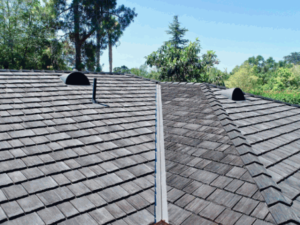
Clay Roof Tiles
Clay roof tiles may be painted to refresh their color and enhance the overall aesthetics of the roof. It is imperative to select appropriate painting techniques and products to avoid compromising the natural properties of the tiles.
When undertaking a painting project for clay roof tiles, several specific factors must be considered. First, the selection of appropriate paint types is critical. The most suitable options are typically 100% acrylic paints, which provide excellent adhesion and flexibility, accommodating the thermal expansion of the tiles. Before application, the surface should be thoroughly cleaned to eliminate any dirt or debris that may hinder adhesion. Proper priming, particularly with a reliable primer coat application, is essential to ensure long-lasting results.
To achieve optimal results, the following techniques are recommended:
- Utilize a roller or sprayer for a smoother application, ensuring even coverage.
- Work in sections to maintain control and avoid uneven patches.
Common pitfalls include failing to follow the manufacturer’s instructions, which can result in peeling or fading over time. Engaging professional painting services can significantly enhance the outcome, as experts possess the knowledge and equipment necessary for proper surface preparation and application.
This approach often leads to improved longevity and a more polished finish for the roof tiles, contributing positively to home improvement projects and roofing service recommendations.
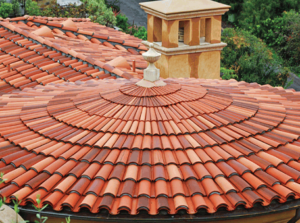
Metal Roof Tiles
Painting metal roof tiles present a viable option that necessitates the careful selection of durable paint products specifically formulated for metal surfaces. This approach not only enhances the aesthetic appeal of the roof but also provides essential protection against corrosion and environmental factors. Additionally, understanding roof color psychology can help homeowners choose shades that enhance their residential properties’ curb appeal.
Before initiating the painting process, it is imperative to conduct thorough surface preparation. This step involves cleaning the metal roof to eliminate dirt, mold, and any existing peeling paint. Once the surface is cleaned, it is essential to remove any rust and scuff the surface to promote optimal paint adhesion. Selecting the appropriate paint is equally important; one should choose high-quality, weather-resistant paints specifically designed for metal roofs, ideally those that contain rust-inhibiting properties. Consulting expert advice on roofs can assist in making the best choices for specific roofing paint types.
- It may be beneficial to apply a primer to enhance adhesion and ensure a uniform color finish. This step is especially crucial if you’re considering painting terracotta roofs, as it helps in achieving a smooth final appearance.
- Selecting vibrant colors that reflect sunlight can contribute to improved energy efficiency. Incorporating insights from roof color psychology can enhance both the aesthetic and functional attributes of the roof.
Implementing regular maintenance strategies, such as inspecting the roof for damage, addressing worn areas, and removing debris, can significantly prolong the lifespan of the painted finish.
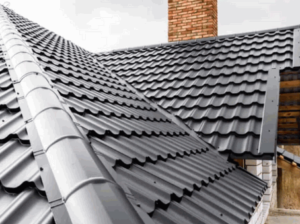
How Long Will Painted Roof Tiles Last?
The lifespan of painted roof tiles can vary significantly based on several factors, including the quality of the durable paint products used, maintenance practices, and local weather conditions. Generally, a well-painted roof can last anywhere from 5 to 15 years before requiring touch-ups or a complete repaint. Understanding the cost of roof painting is also essential for budgeting future maintenance.
To fully comprehend the longevity of these coatings, it is important to consider the interaction between environmental elements and the materials involved. Frequent exposure to extreme weather conditions, such as intense sunlight, heavy rainfall, or hail, can compromise the integrity of the paint. The selection of high-quality paint is critical; premium brands typically utilize advanced technology to enhance durability.
- Maintenance practices: Regular inspections and cleaning can mitigate the effects of dirt and grime accumulation.
- Proper application: Ensuring that the paint is applied under optimal conditions is essential for enhancing adhesion and longevity.
- Weather resistance: Utilizing coatings specifically designed to withstand local climatic challenges can also significantly improve lifespan.
By combining superior product choices with diligent maintenance, homeowners can effectively extend the life of their painted roofs and maximize their investment.
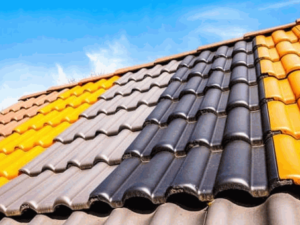
What Are The Alternatives To Painting Roof Tiles?
If painting is not the preferred method for the care of roof tiles, there are several effective alternatives to consider, including:
- roof tile coating
- roof tile replacement
- roof tile cleaning and sealing
- lichen growth prevention strategies
Each option presents its own set of advantages and should be assessed based on the specific requirements of the roofing materials in question.
Roof Tile Coating
Roof tile coating represents a superior alternative to traditional painting, offering a protective layer that enhances both the durability and weather resistance of the tiles.
This innovative method not only elevates the aesthetic appeal of the roofing system but also significantly extends its lifespan. Unlike conventional painting, which tends to merely conceal surface imperfections, roof tile coating provides a robust barrier against environmental elements such as UV rays, rain, and debris. Consequently, this leads to reduced maintenance costs and a decreased frequency of necessary replacements.
It is imperative to select high-quality products specifically designed for the unique properties of the roofing material. A properly executed roof coating application can greatly enhance energy efficiency, resulting in lower heating and cooling expenses.
The following benefits should be considered:
- Enhanced protection against moisture and algae growth
- Improved energy efficiency
- Extended lifespan of roofing materials
- Reduced frequency of repairs and replacements
By prioritizing appropriate coating solutions, homeowners can protect their investment and ensure the long-term integrity of their roofs.
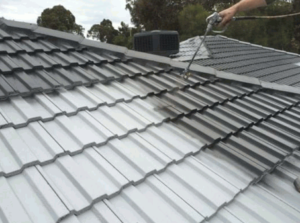
Roof Tile Replacement
Roof tile replacement may be necessary when the existing tiles are significantly damaged or beyond repair. This option not only revitalizes the aesthetic appeal of the roof but also provides an opportunity to upgrade to more durable roofing materials, such as slate tiles, Colorbond, or concrete tiles.
Determining the appropriate time for this essential project often depends on visible signs of wear, such as cracked, curled, or missing tiles. If leaks are becoming increasingly problematic, neglecting these indications could result in more extensive damage, including compromised structural integrity. Consulting Pyramid Roofing can offer professional assessments and solutions.
When considering the financial implications, homeowners typically encounter costs ranging from $800 to $3,500, depending on the size of the roof and the chosen materials.
To ensure a successful roof tile replacement, it is imperative to select qualified professionals. The following guidelines may assist in this process:
- Verify their licensing and insurance.
- Request references and review feedback.
- Obtain detailed estimates and inquire about warranties.
Adhering to these steps will aid in identifying reliable contractors who can ensure quality workmanship on this significant home improvement project.
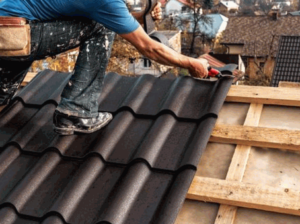
Roof Tile Cleaning And Sealing
Roof tile cleaning and sealing represent a practical alternative that aids in maintaining the longevity and aesthetic appeal of the tiles without necessitating painting. This process encompasses effective moss removal techniques and the application of sealants designed to protect against lichen growth and other environmental factors.
The maintenance of roof tiles is critical, as it not only enhances the visual attractiveness of a property but also extends the lifespan of the roof itself. Regular cleaning, typically recommended every two to three years, serves to remove debris and prevent moisture retention, which can lead to significant damage. Implementing proper roof protection methods can further safeguard against harmful elements like Algae and Lichen.
To effectively manage roof tile maintenance, the following steps should be undertaken:
- Schedule an inspection to assess the level of grime on the roof.
- Engage professional cleaning services that employ safe chemicals and high-pressure washing techniques.
- Select high-quality sealants that resist UV rays and moisture, thereby ensuring durability against environmental elements.
By implementing these measures, homeowners can reduce the necessity for frequent painting, which can be both costly and time-consuming. By prioritizing roof tile cleaning and sealing, individuals can establish a more efficient maintenance routine, resulting in substantial long-term savings and a consistently appealing roof.
